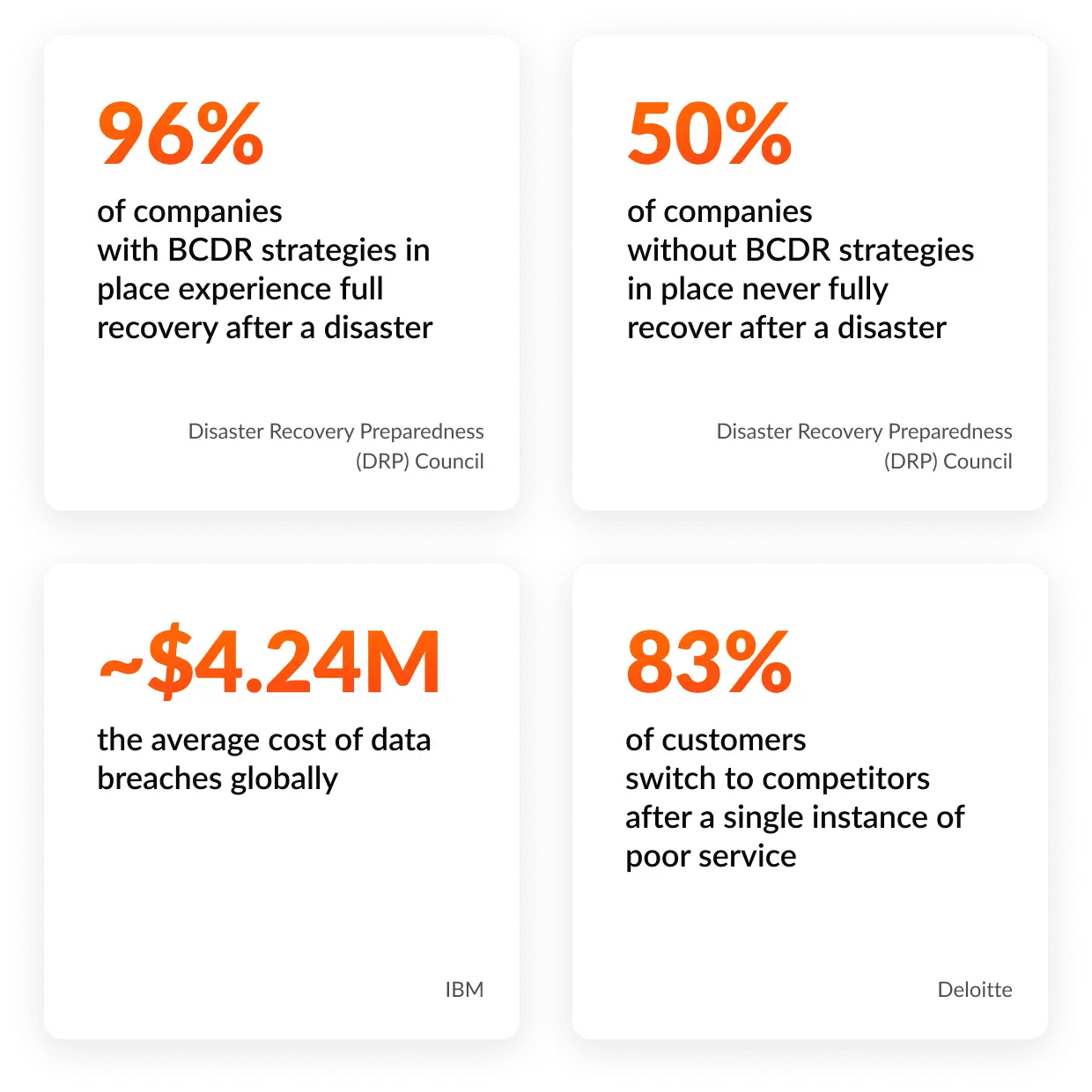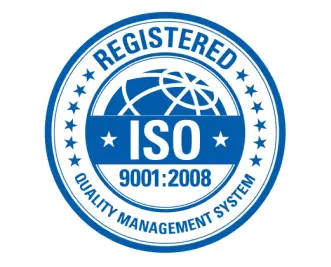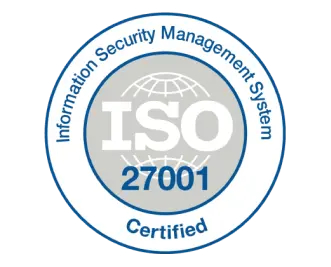Ensure high business resilience with N-iX business continuity consulting services
Business continuity and disaster recovery (BCDR) are essential aspects of organizational resilience, ensuring that businesses can continue operating during and after disruptive events. An effective BCDR strategy will help you minimize downtime, protect your revenue and reputation, meet regulatory requirements, enhance competitive advantage, and support customer confidence.
With {shortcode} years on the market, N-iX has the expertise to develop an effective BCDR strategy tailored to your specific needs. We have successfully delivered over 100 cybersecurity and business continuity projects across various industries, including finance, manufacturing, retail, telecom, and more. N-iX is well-prepared to help you preserve your business and protect it from disaster scenarios.

Design a solid Business Continuity and Disaster Recovery strategy What we offer
Current State Assessment (CSA)
Evaluate your existing infrastructure, systems, processes, and practices to clearly understand your IT landscape, including strengths, weaknesses, opportunities, and threats.
Business Impact Analysis (BIA)
Identify and analyze key business processes and dependencies on IT services to quantify the financial, operational, and reputational consequences of service disruptions, such as downtime, data loss, or system failures.
Threat and Risk Assessment (TRA)
Analyze potential threats to determine their likelihood, severity, and potential impact on your ability to deliver products or services.
Technology Landscape Analysis
Assess the technological infrastructure and systems that support your operations to acquire a comprehensive understanding of your IT environment, including hardware, software, networks, and data storage.
Business Dependency Mapping (BDM)
Analyze dependencies on personnel, technology, infrastructure, etc., to determine the impact of disruptions to these functions on overall business operations.
Identification of single points of failure
Identify and mitigate components, systems, or processes that, if disrupted, could significantly impact your ability to operate effectively.
Data and configuration analysis for backup
Identify the key data and configurations that require backup to ensure successful recovery during disaster scenarios.
Implementation roadmap design
Acquire a clear and comprehensive step-by-step roadmap that ensures the success of your Business Continuity strategy.
Implement a clear step-by-step Business Continuity Plan How it works
N-iX will help implement your business continuity plan without causing service interruptions or extra expenses. We also make sure that clear and consistent documentation is maintained at all times.
- Contacting team members
- Activating the business continuity plan
Prepare your business for any scenario with mock disaster exercisesMock disaster exercise
Make sure that your business is prepared to withstand and recover from any
potential crisis. N-iX, together with your senior management and team leaders,
can conduct a wide range of mock exercises to test, refine, support, and improve your business
continuity and disaster recovery strategy.
Data loss and backup
Test machine recoveries, as well as file-level restores to verify the viability of your backups, making sure they can be easily restored during real-world scenarios.
Backup failure
Run different types of tests on your backup chain, such as cloud backup recovery, backup virtualization, backup image export, and more.
Backup verification testing
Incorporate automatic validation of your backup systems to verify that there are no issues that can hinder recovery.
Cybersecurity
Bolster your cybersecurity with security audits, penetration testing, vulnerability assessments, and social engineering tests to protect your business from minor threats and full-blown cyberattacks.
Hardware failure
Evaluate processes aimed at handling hardware failure, such as how you can determine whether the hardware can be salvaged, how quickly you can deploy it in case replacement is required, and what steps you can take to make the process faster.
Network interruptions and outages
Test your preparedness for unexpected network traffic surges or network attacks, the readiness of your IT teams to respond to issues quickly, and your overall network health.
Utility outages
Establish effective practices that help your recovery teams quickly respond to utility outages, such as outage localization, power backup inspection, critical service, and personal prioritization, etc.
Workforce interruptions
Perform routine evaluations of how prepared you are for interruptions in the workforce by testing IT systems and solutions that enable remote work, as well as your ability to relocate operations and maintain critical operations.
Cloud environment testing
Leverage cloud technologies to build and test highly available and fault-tolerant ecosystems that extend the backup and recovery capabilities of the on-premise infrastructure.
Certifications and compliance






Why choose N-iX business continuity consulting services? Why N-iX
100+
Completed security and business continuity projects
20+
Security consultants
23
Years of experience
2,400+
tech experts
160+
Active clients
ISO, SOC2, PCI DSS, GDPR
compliance
FAQ
The main goal of business continuity is to bolster the essential company operations in crisis and/or disaster scenarios. Through meticulous planning, a company can sustain operations even with constrained resources or limited access to physical premises. Additionally, business continuity planning helps mitigate potential revenue and reputational setbacks.
- Recovery protocols;
- Technological solutions;
- Testing procedures;
- Employee training./li>
Contact us
Drop a message to our team to see how we can help
Trusted by












Industry recognition






